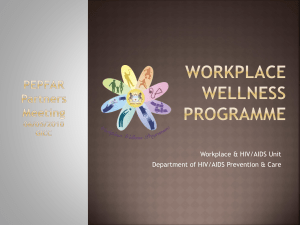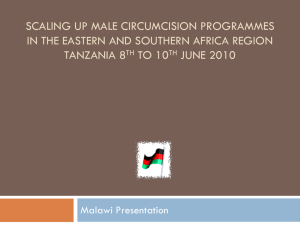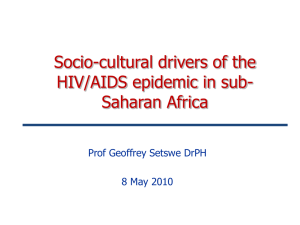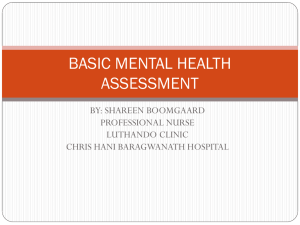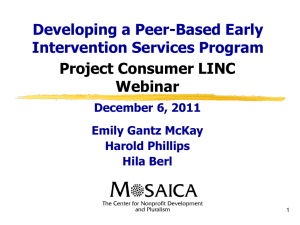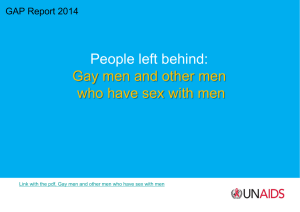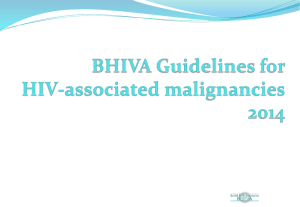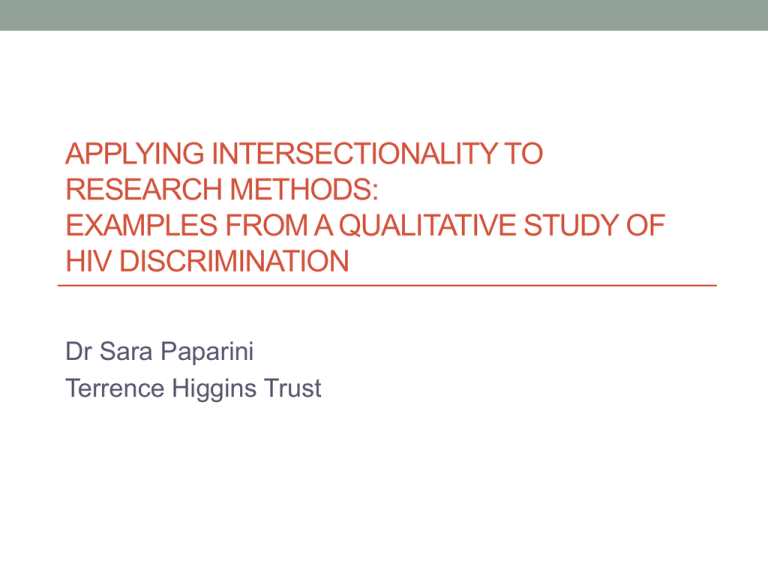
APPLYING INTERSECTIONALITY TO
RESEARCH METHODS:
EXAMPLES FROM A QUALITATIVE STUDY OF
HIV DISCRIMINATION
Dr Sara Paparini
Terrence Higgins Trust
What’s all this?
• Findings from PhD research
• A qualitative study of the experiences of
discrimination of 35 PLWH
• Carried out between 2008-2013
• After previous years of research across
voluntary, clinical and academic sectors
Why HIV?
• HIV is helpful to think ‘with’
• HIV disproportionally affects ‘marginalised’
groups in the UK
• HIV is transmitted through behaviours that are
morally ‘charged’
• HIV thrives where there is prejudice, ignorance
and inequality
• HIV affects people in different ways: same illness
but not the same story
Estimated number of people living with (both diagnosed and
undiagnosed) HIV infection in the United Kingdom: 2012
Social research on HIV
in the UK
(Mostly):
• Quantitative
• Behaviour/prevention oriented
• Psycho-social studies
• Focuses on the two majority groups in the
epidemic (gay men/MSM and black Africans)
• With little or no research on any other groups
Analytical lenses for HIV in the UK
• (Black) Ethnicity
• (Homo) Sexuality
• Sometimes ethnicity + sexuality
• Sometimes ethnicity + gender
• (More recently) age
HIV discrimination
• Is a social process
• Takes place at different levels (individual, interpersonal,
structural)
• Takes different forms in different contexts (think of HIV as
a global pandemic made up of lots of different epidemics)
• Is inseparable from pre- and co-existing forms of
discrimination (against drug use, against sexual
minorities, against foreigners etc.)
• Is inherently MULTIPLE
Why not try intersectionality?
• An analytical framework to understand multiple and
•
•
•
•
•
•
simultaneous forms of oppression…
…and of opportunity
Originally developed (by K. Crenshaw, P. Collins et al) as
a critique of feminist and anti-racist discourses that
privileged gender over race and vice-versa
Individuals (and groups) are socially located (in different
contexts and at different points in time)
Social locations are shaped by intersecting axes of
oppression (and opportunity) aka axes of domination,
categories of difference etc.
Main axes of interest are race, class and gender…
But also sexuality, disability, seropositivity and so on
Key principles of intersectional categories
• Time, place and subject-specific
• Mutually constituting (rather than
commensurable)
• Non-hierarchical (rather than primary)
• Internally heterogeneous (rather than
representing group identity)
• Operationalised simultaneously in analysis
• Used reflexively throughout research studies
How did I use it?
In theory…
• By asking: what does it mean to take an intersectional
approach to the entire research process?
In practice….
• Reviewing the literature for multiple categories and for
methodologies
• Recruiting
• Sampling
• Analysis
• Presentation of findings
Choosing categories
(1) Should be universally relevant to any social structure
Race/ethnicity; sex/gender; class
(2) Should be of particular relevance to the context under
study
Sexuality; citizenship
(3) Should be applicable to all participants
BASED ON:
• Broader knowledge of social science and health research
• Established use in the social science of HIV in UK and
comparable settings
• Relevance in relation to current policies that affect PLWH
KEY CHALLENGES -1
• How many categories (the list is endless?)
• What subcategories?
• What definition (for each category)?
Intersectional matrix (basic)
Sex/gender
Sexuality
Class
Citizenship
Race/ethnicit
y
Male
Gay/Lesbian
Professional
UK Born
White British
Female
Bisexual
Skilled
UK Resident
/Refugee
White Other
Transgender
Heterosexual
Elementary
Work/Study
Visa
Black African
MSM
Student
Asylum
seeker
Black Other
Unemployed
(current)
FAS; HLTR;
Disc LTR
Minority
Ethnic
Unemployed
(long term)
FAS (no right
of appeal);
Over-stayer;
Undocum.
Other
Recruitment
• Aiming to include people at different ‘intersections’
• Contacting organisations for PLWH that serve different
groups of clients – most orgs are for all PLWH but in
reality the client-base is made up mostly of people from
certain backgrounds
• Recruiting through the NHS
KEY CHALLENGE
Obtaining NHS ethics approval !!!
Intersectional matrix (final/complex)
Sex/
Gender
Sexuality
Class
Residency/
Citizenship
Race/
Ethnicity
Male
Gay
Middle
Full UK
Black African
Female
Heterosexual Working
Migrant
Black Other
Welfare
Precarious
White Other
Destitute?
Non -citizen
White British
Minority
Ethnic
KEY CHALLENGES
• Assigning categories: whose choice is
it?
• Detailed measurements (i.e. class,
citizenship)
• And what about the missing
intersections?
Intersectional analysis & key challenges
• A (nightmare!) version of thematic analysis
• Coding for negative/discriminatory events and
positive/neutral ones
• Coding for categories (one or more) involved in
discrimination
• Coding for who did what to whom
But then?
• Cannot divide participants by types such as all women, all
UK-born, all African working class men etc. (too many
cases)
• Cannot draw on similarities/differences (too much
variation)
Presentation of findings
• Descriptive findings that pertain to the definition of stigma
and discrimination, the main actors involved, the main
contexts
Then
• Findings presented via each category (not ideal!) but
showing each category in interaction with the others – as
available in the data
• Suggesting ‘meta-categories’ that can encompass the
range of the interplays of the categories in intersection
• Reflecting on emerging categories and on methodological
experiment
Key findings – in brief!
• Time-dimension of stigma and discrimination and
•
•
•
•
connections between the intensity of the relationship and
the severity of the impact
Emerging categories of salience (age, LTSD, employment
status)
Advantage/disadvantage with regards to discrimination on
the basis of each category in interaction with the others
Security/insecurity in different life domains: material,
emotional, health-related
Policy ramifications and recommendation based on more
complex approach to the issue
Dilemmas for discussion
• Do you see any contributions?
• Do you see any further limitations? (I do!)
• Do you have any different suggestion for resolution of key
challenges?
KEY CHALLENGE AREAS:
Choosing and measuring categories
Recruiting for variation and avoiding bias
Assigning ‘identities’
Analysing and presenting findings intersectionally
Thanks to all participants and staff at:
CARA LIFE
HOPE GATE
PLWHA working for PLWHA






